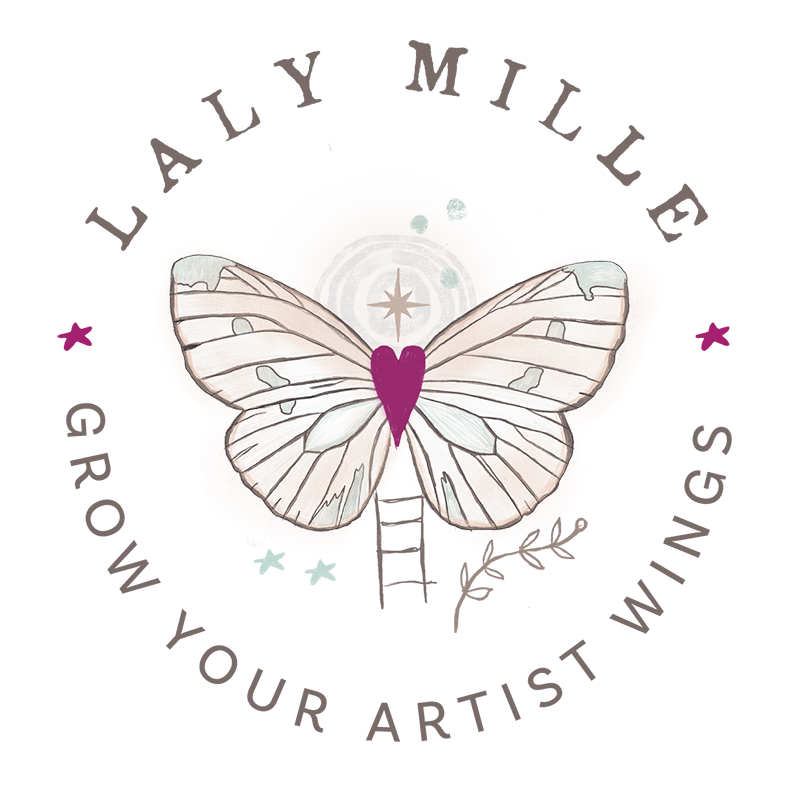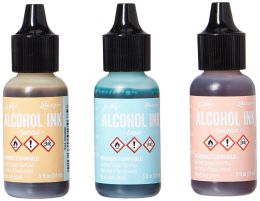Flower Flow
flower flow
Mixed media art class
Here is a general list of suggested supplies and tools for the class. Clicking on the images below will take you to the Amazon shop for your region when available (affiliate links).
You don’t need to buy everything on the list! I really invite you to work with what you already have and what you feel comfortable with. In the videos, you’ll see that I’m including a large variety of options, not because you need them all, but to give you a chance to find something you already own. For instance: you may not have a black Stabilo All pencil, but maybe you have some charcoal sticks that would work too!
In the first part of the class, you’ll find a general video about art supplies. Watch it first before you buy anything. I also go over the supplies at the start of each lesson.
In your classes library, under Free Lessons, you’ll find a 5-part workshop all about art supplies. I strongly encourage you to watch it, especially if you are new to mixed media.
Substrates: They don’t have to be the same as mine, use what you feel comfortable with, and what you can easily find at your local store. You can work on stretched canvases, wood panels, MDF boards, canvas boards, or even in an art journal. For the warm-up series, I work on 300 gsm watercolor paper.
Colors: Whenever possible, I’m listing the exact supplies and colors that I use and love, the ones you’ll see on my table (otherwise students always ask me!) but you really don’t have to use the same as mine, and you probably don’t need as many. Working with your own favorite colors (and flowers) will help you make your art unique.
set up your space
The basics:
Palette and/or other small containers
Water: jar + spray bottle
Rags
Something to protect your surface (table-cloth, packing paper...) and your clothes (apron, old shirt...)
Scissors
Assorted paintbrushes: flat, filbert and round brushes including a medium-sized flat brush for collage
Palette knife, silicone tool or old plastic card
Needle tool / awl, toothpick or wood skewer
Masking tape (avoid the blue kind as the color can be distracting)
White Gesso
Matte gel medium and/or matte fluid medium (your choice, I prefer the gel for collage, but I also use the fluid kind to thin down acrylics)
Optional:
Heat gun/heat tool to speed up drying
Brayer
Bone folder
Ruler
Substrates
You will find recommended substrates listed within each lesson. Remember to be creative: use what you’ve got or what feels best, in any size that you like!
Stretched canvases, regular or deep edges
Wood panels (MDF panels from the DIY store work great)
Heavy watercolor paper (300gsm / 140lb)
paints & inks
I’m listing the colors I’m using in the lessons, feel free to use something different to match your personal style!
Acrylic paints
Lights: Titanium White and one or two light neutrals, like Naples Yellow Light, Parchment (Liquitex) or Titan Buff.
Darks: Black (or black gesso) + Raw Umber & Payne’s Grey
Blues & Greens: Cyan (primary blue), Turquoise, Turquoise Green, Sap Green, Phtalo Green and some craft paints.
Reds/Pinks: Portrait Pink (Liquitex), Naphtol Red Medium (Golden), Magenta and some craft paints.
Yellow
Optional
Chalk paint (or you can mix acrylic paint with some plaster of Paris). There are lots of brands. I find Rustoleum most easily in France but you can also try Annie Sloan or other brands.
Acrylic inks (you can thin down acrylic paints instead)
Watercolors (you can thin down acrylic paints instead)
Alcohol inks
Alcohol Inks (to see the whole range and purchase individual colors, go HERE)
watercolors
We play with watercolor in some of the lessons, but they are really optional. If you intend to buy some, my advice is to invest in a few really good quality ones, rather than a cheaper, bigger set. I own two brands of professional quality watercolor: a full set by Sennelier (a French brand, I try to buy local whenever possible!) and a few extra colors by Daniel Smith (a US brand). I’m listing both below:
Watercolor dots are a great way to play with watercolor and try out plenty of colors without making a big investment!
Collage
You don't need to buy anything here: go on a scavenger hunt and ask around to friends, family and your local library.
A variety of papers in neutral and floral patterns: pages from gardening catalogs, printed tissue paper, napkins, packing paper, book pages (preferably from a book that inspires you), sheet music, sewing pattern tissue, magazines...
A few pieces of fabric, lace, cheesecloth etc.
IMPORTANT: If you print out some images, make sure to use water-resistant ink. Laser copies/photocopies are best, or if you have an archival ink printer that’s great too. Avoid regular, home/office inkjet printers, as the ink will bleed with wet media (you could use a spray fixative, but the ink will still fade after a while).
DRAWING AND MARK-MAKING
There are so many options here. I’m listing my favorites, but make sure to use whatever you’ve already got.
Pens and pencils
Regular graphite pencil or mechanical pencil
Graphite water soluble pencil
Optional
Black water-soluble pencil (Stabilo All, Inktense…) or water-soluble crayon (Neocolor II)
Black & white acrylic paint markers (Posca, Molotow etc.). Very useful for highlights and shadows. The ones with a fine tip are great for journaling.
Coloring pencils or water-resistant crayons (NeoColor I)
Water-soluble pastels (Neocolor II, Stabilo woody etc.)
Pitt Artist Pens in colors you love, with brush tip and/or fine tip. A brown one (Walnut Brown or Caput Mortum) is very handy for shading.
Stamps & stencils of your choice. These don’t have to be store-bought (bubble wrap, textured wallpaper…)
Black or Brown archival Ink Pad
Soap and a scratchy sponge or sanding block (this is for the distress technique in lesson 1)
Acrylic Paint markers
I most often use Posca pens in black and white, but I have recently discovered the One4All refillable paint markers by Molotow, which are really good and more Earth-friendly.
and some fun things!
FINISHING TOUCHES
I often get asked what I use to finish and seal my paintings, so here it is! Most of the time I use matte acrylic varnish by Liquitex, and for the more colorful paintings, I mix it half and half with satin. (I never use spray varnish as it is so bad for the planet, and your health.)

















































